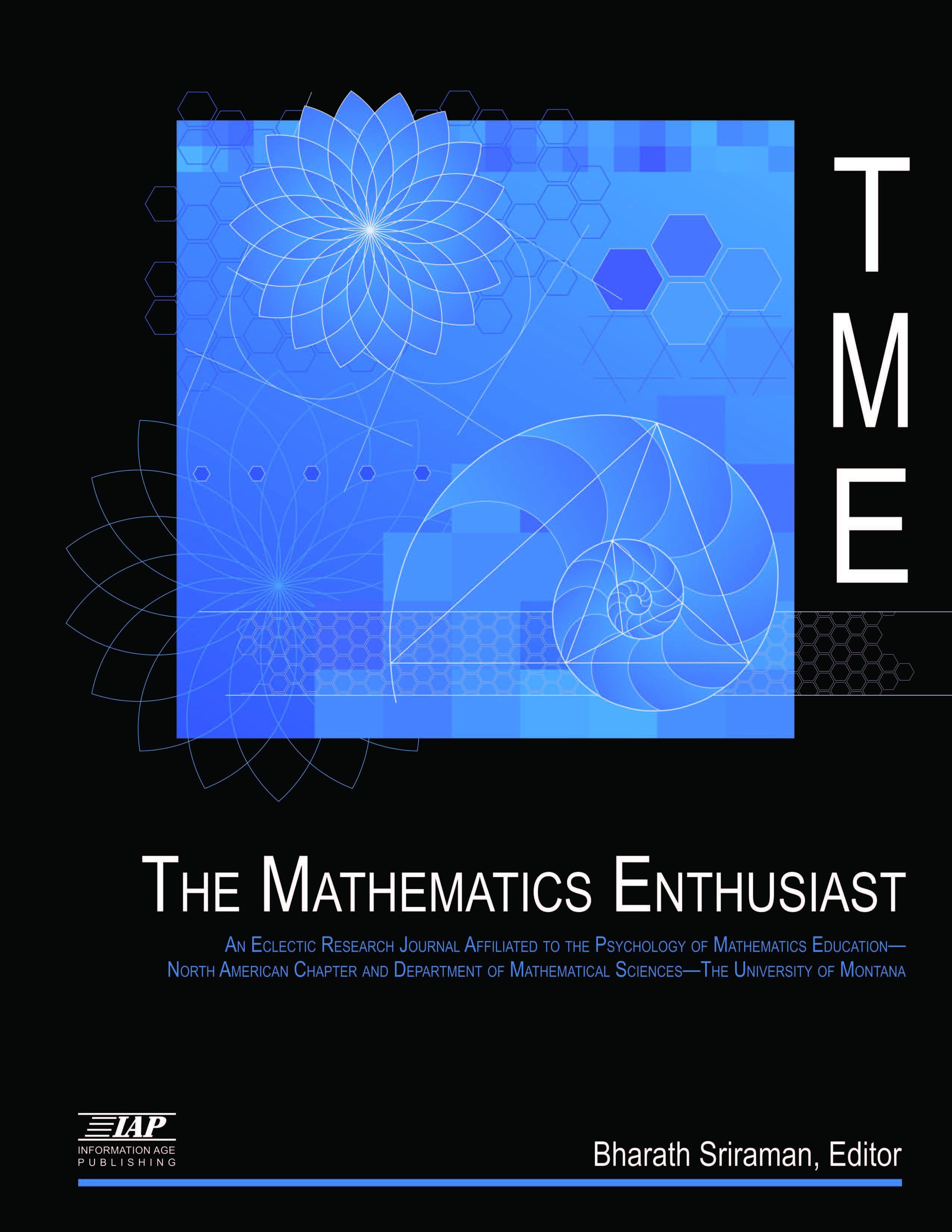
Volume
13
Issue
3
Abstract
The central theme in this article is that certain problem-solving frameworks (e.g., Polya, 1957; Carlson & Bloom, 2005) can be viewed within Wallas’ four stages of mathematical creativity. The author attempts to justify the previous claim by breaking down each of Wallas’ four components (preparation, incubation, illumination, verification) using both mathematical creativity and problem-solving/proving literature. Since creativity seems to be important in mathematics at the undergraduate level (Schumacher & Siegel, 2015), the author then outlines three observations about the lack of fostering mathematical creativity in the classroom. Finally, conclusions and future research are discussed, with emphasis on using technological advances such as Livescribe™ pens and neuroscience equipment to further reveal the mathematical creative process.
First Page
255
Last Page
278
Recommended Citation
Savic, Milos
(2016)
"Mathematical Problem-Solving via Wallas’ Four Stages of Creativity: Implications for the Undergraduate Classroom,"
The Mathematics Enthusiast: Vol. 13
:
No.
3
, Article 6.
DOI: https://doi.org/10.54870/1551-3440.1377
Available at:
https://scholarworks.umt.edu/tme/vol13/iss3/6
Digital Object Identifier (DOI)
10.54870/1551-3440.1377
